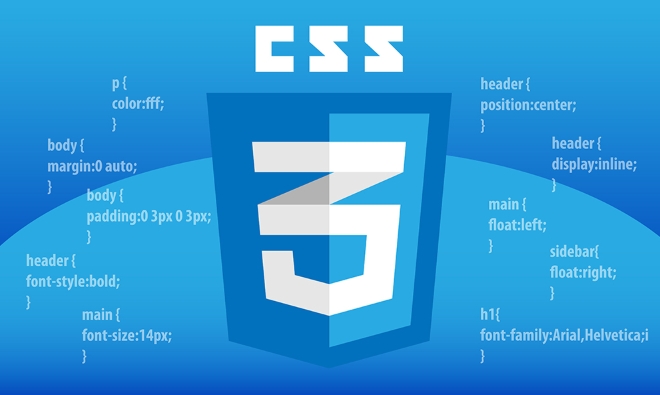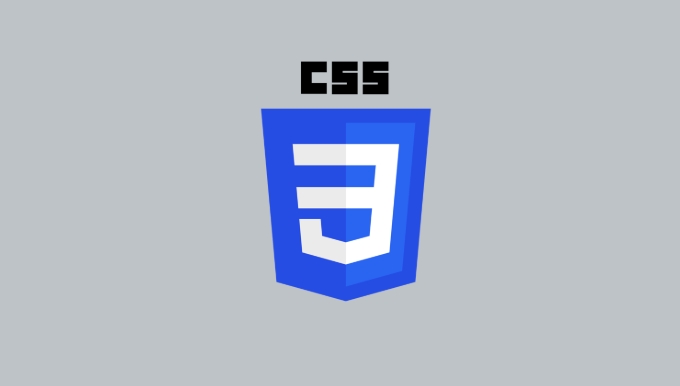The reason why z-index does not take effect is the effect of the stacking context. ① z-index is only valid for positioning elements and needs to be in the same stacking context; ② stacking context is an independent space created by the parent element, and the stacking order of child elements is only effective in that space; ③ The way to create a new stacking context includes using transform, opacity, filter and other attributes; ④ A common problem is that z-index in different stacking contexts cannot be directly compared, so you need to check whether the common ancestor has created stacking context; ⑤ The troubleshooting method is to view the style of the parent element through the developer tool; ⑥ The principle of correct use of z-index includes hierarchical grouping management, avoiding arbitrary nesting hierarchies, keeping the DOM structure clear, and simplifying the structure during debugging. Only by understanding stacking context can you correctly control hierarchical relationships.

z-index seems simple, but it often makes people feel troubled. It does not work independently, but depends on the structure of the entire stacking context. If you find that an element should be displayed at the top but is always suppressed, the problem is most likely in the entire hierarchy relationship, rather than z-index itself being written incorrectly.

What is stacking context?
z-index is only valid for positioning elements (such as setting position: relative , absolute , fixed , or sticky ). But the premise that it really works is that these elements must be in the same stacking context .

A stacking context is a "independent space" created by a parent element, and the stacking order between the child elements inside takes effect only in this space. Once you cross this space to compare the stacking order, you won't count.
For example:

<div class="parent1"> <div class="child" style="z-index: 1000;">Child A</div> </div> <div class="parent2"> <div class="child" style="z-index: 1;">Child B</div> </div>
Even if A's z-index is much larger than B, if they are not in the same stacking context, who is in the end, it depends on the position and level of their respective parents in the entire page.
What operations create a new stacking context?
- Use
z-indexto locate properties - Use
opacityless than 1 - Using
transform - Using
filter - Use
will-change - Use
isolation: isolate - Using
mix-blend-mode - Use
perspectiveorclip-path
These will quietly create a new stacking context, affecting the level you originally wanted to control.
FAQ: Why doesn't z-index take effect?
The most common situation of this problem is that you compare z-index in different stacking contexts.
For example, the following common scenario:
<div class="modal" style="z-index: 100;"> <div class="content">I am popup content</div> </div> <div class="sidebar" style="z-index: 99;"> <div class="menu">Menu Bar</div> </div>
It looks like z-index of modal is larger and should cover the sidebar. But if .modal and .sidebar belong to different parent elements, and any of these parent elements create their own stacking context, then z-index of the two cannot be directly compared.
At this time, you have to look up to see who their closest common ancestor is and whether that ancestor also created a stacking context. Sometimes you will find that the problem is not in the current element at all, but in its "ancestor".
How to check?
- Open the browser developer tools, select the relevant elements, and view their styles.
-
opacitywhether each parent element hastransformpropertiesfiltermay create stacking context. - If there are multiple stacking context levels nested, they need to adjust their
z-indexuniformly, or reorganize the DOM structure.
How to use z-index correctly?
To get z-index to work as you expect, we recommend following a few simple principles:
Hierarchical grouping management : Set a fixed
z-indexrange for different functional modules, such as 100~199 for navigation bar, 200~299 for pop-up windows, and 300~399 for masks. This is not easy to conflict.Avoid nesting levels at will : Don't add
z-indexto every component, otherwise it will easily cause confusion. Try to keep hierarchical control concentrated in top-level layouts or common components.Keep the DOM structure clear : put the elements that need to be superimposed on each other in the same container so that they are under the same stacking context, making it easier to control the hierarchy.
Simplify structure during debugging : When you encounter hierarchical confusion, you can temporarily remove some irrelevant elements, or highlight each area with background color to help you see their hierarchical relationship more intuitively.
Basically that's it. The key to understanding z-index is to figure out the stacking context it is in. As long as you don’t jump into the misunderstanding of “what value is greater”, but analyze it from the structural level, most problems can be solved.
The above is the detailed content of Troubleshooting CSS `z-index` stacking contexts. For more information, please follow other related articles on the PHP Chinese website!

Hot AI Tools

Undress AI Tool
Undress images for free

Undresser.AI Undress
AI-powered app for creating realistic nude photos

AI Clothes Remover
Online AI tool for removing clothes from photos.

Clothoff.io
AI clothes remover

Video Face Swap
Swap faces in any video effortlessly with our completely free AI face swap tool!

Hot Article

Hot Tools

Notepad++7.3.1
Easy-to-use and free code editor

SublimeText3 Chinese version
Chinese version, very easy to use

Zend Studio 13.0.1
Powerful PHP integrated development environment

Dreamweaver CS6
Visual web development tools

SublimeText3 Mac version
God-level code editing software (SublimeText3)

Hot Topics
 What is 'render-blocking CSS'?
Jun 24, 2025 am 12:42 AM
What is 'render-blocking CSS'?
Jun 24, 2025 am 12:42 AM
CSS blocks page rendering because browsers view inline and external CSS as key resources by default, especially with imported stylesheets, header large amounts of inline CSS, and unoptimized media query styles. 1. Extract critical CSS and embed it into HTML; 2. Delay loading non-critical CSS through JavaScript; 3. Use media attributes to optimize loading such as print styles; 4. Compress and merge CSS to reduce requests. It is recommended to use tools to extract key CSS, combine rel="preload" asynchronous loading, and use media delayed loading reasonably to avoid excessive splitting and complex script control.
 How to use Lotties in Figma
Jun 14, 2025 am 10:17 AM
How to use Lotties in Figma
Jun 14, 2025 am 10:17 AM
In the following tutorial, I will show you how to create Lottie animations in Figma. We'll use two colorful designs to exmplify how you can animate in Figma, and then I'll show you how to go from Figma to Lottie animations. All you need is a free Fig
 Breaking Boundaries: Building a Tangram Puzzle With (S)CSS
Jun 13, 2025 am 11:33 AM
Breaking Boundaries: Building a Tangram Puzzle With (S)CSS
Jun 13, 2025 am 11:33 AM
We put it to the test and it turns out Sass can replace JavaScript, at least when it comes to low-level logic and puzzle behavior. With nothing but maps, mixins, functions, and a whole lot of math, we managed to bring our Tangram puzzle to life, no J
 External vs. Internal CSS: What's the Best Approach?
Jun 20, 2025 am 12:45 AM
External vs. Internal CSS: What's the Best Approach?
Jun 20, 2025 am 12:45 AM
ThebestapproachforCSSdependsontheproject'sspecificneeds.Forlargerprojects,externalCSSisbetterduetomaintainabilityandreusability;forsmallerprojectsorsingle-pageapplications,internalCSSmightbemoresuitable.It'scrucialtobalanceprojectsize,performanceneed
 Does my CSS must be on lower case?
Jun 19, 2025 am 12:29 AM
Does my CSS must be on lower case?
Jun 19, 2025 am 12:29 AM
No,CSSdoesnothavetobeinlowercase.However,usinglowercaseisrecommendedfor:1)Consistencyandreadability,2)Avoidingerrorsinrelatedtechnologies,3)Potentialperformancebenefits,and4)Improvedcollaborationwithinteams.
 CSS Case Sensitivity: Understanding What Matters
Jun 20, 2025 am 12:09 AM
CSS Case Sensitivity: Understanding What Matters
Jun 20, 2025 am 12:09 AM
CSSismostlycase-insensitive,butURLsandfontfamilynamesarecase-sensitive.1)Propertiesandvalueslikecolor:red;arenotcase-sensitive.2)URLsmustmatchtheserver'scase,e.g.,/images/Logo.png.3)Fontfamilynameslike'OpenSans'mustbeexact.
 CSS Counters: A Step-by-Step Tutorial with Examples
Jun 12, 2025 am 10:31 AM
CSS Counters: A Step-by-Step Tutorial with Examples
Jun 12, 2025 am 10:31 AM
CSSCounters is a tool for creating automatic numbers. 1. Basic usage: define and operate counters through counter-reset and counter-increment, such as "SectionX." before h2. 2. Advanced usage: Use nested counters to create complex numbers, such as chapter and section numbers. 3. Notes: Ensure the counter is reset correctly, optimize performance, and simplify counter logic. 4. Best practice: clear naming, define counters in CSS, and use counter-increment and counter-reset reasonably.
 What is Autoprefixer and how does it work?
Jul 02, 2025 am 01:15 AM
What is Autoprefixer and how does it work?
Jul 02, 2025 am 01:15 AM
Autoprefixer is a tool that automatically adds vendor prefixes to CSS attributes based on the target browser scope. 1. It solves the problem of manually maintaining prefixes with errors; 2. Work through the PostCSS plug-in form, parse CSS, analyze attributes that need to be prefixed, and generate code according to configuration; 3. The usage steps include installing plug-ins, setting browserslist, and enabling them in the build process; 4. Notes include not manually adding prefixes, keeping configuration updates, prefixes not all attributes, and it is recommended to use them with the preprocessor.






